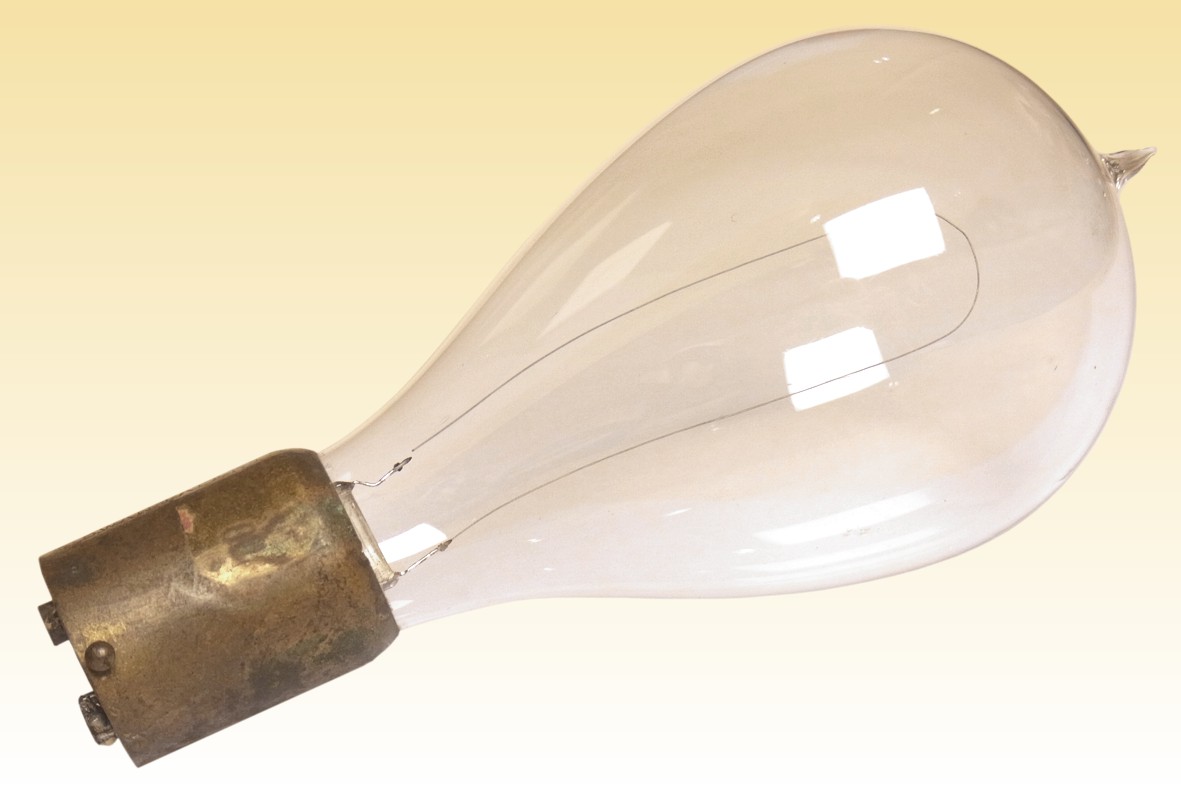
|
American Swan Carbon Filament Lamp |

This lamp appears to be of a model produced around 1885-1893 at the Brush works. Lamps produced by the company during those years are quite distinctive because of the so-called goal-post design of stem that supports the filament. The origin of this stem design is not known, and it differs considerably from British-made Swan lamps. The platinum wires are first sheathed in glass, then fused to a short length of glass rod that holds them at the desired spacing. It was superseded after the 1893 invention of the flared stem.
The filament is made by Swan's squirted cellulose process and has been attached to the lead wires with carbon deposited by heating the joint while immersed in a liquid hydrocarbon. The cap is of the distinctive British style, made from a short length of 7/8" diameter brass tubing and bearing side pins which retain it in the holder by a bayonet action. As is typical of American Swan lamps, the insulation material is wood and the electrical contacts are simple screws fixed into the wood, the leadwires from the lamp being soldered into the screw heads.



| Manufacturer: | Swan Lamp Mfg. Co. | Division of Brush |
| Lamp Power: | Approx 90 Watts | |
| Lamp Voltage: | 100 Volts | |
| Lamp Current: | 0.8 Amperes | |
| Cap Type: | Bayonet 7/8" (22mm) | Wooden Insulator |
| Bulb Type: | P-60 | P-19 in eighths/inch |
| Bulb Finish: | Clear | Soda-lime glass |
| Filament Type: | Squirted Cellulose | Deposited joint |
| Atmosphere: | Vacuum | No getter |
| Luminous Flux: | 201 lm | 16 Candle Power |
| Luminous Efficacy: | 2.2 lm/W | 5.6 Watts per Candle |
| Beam Intensity: | N/A | |
| Beam Distribution: | N/A | |
| Colour Temperature & CRI: | CCT: Approx. 2000K | CRI: Ra 100 |
| Chromaticity Co-ordinates: | CCx: 0.527 | CCy: 0.413 |
| Rated Lifetime: | Approx 800 hours | |
| Burning Position: | Vertical only | (to avoid filament sag) |
| Overall Length: | 140mm | 5¼ inches |
| Light Centre Length: | 82mm | 3¼ inches |
| Factory: | Euclid, Ohio | U.S.A. |
| Date of Manufacture: | c. 1885-1893 | |
| Original / Present Value: | Unknown | Unknown |
